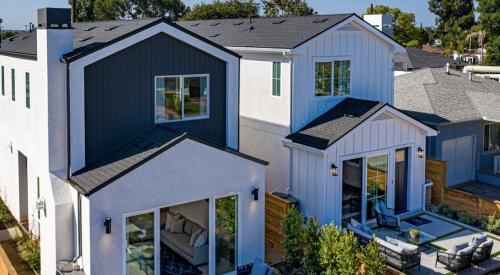PB: What's the biggest barrier to other home builders producing affordable single-family houses in America's inner cities (see Making Money in Affordable Housing)?
Bigelow: There are a lot of barriers - political, social and economic - that are formidable enough to stop most builders in their tracks. For example, it's very hard to bring technical innovation to bear on affordability in cities with 100 years of bureaucratic overkill still in place to protect against problems that no longer exist. In Chicago, we still have requirements for exterior walls that exceed International Building Codes, and those regulations were put in place as a response to the Great Chicago Fire of 1871. This is not the fault of people in city government or even the building department. Red tape has a life of its own. It grows unless it's fought, and most of our cities have never had anyone in place to fight for affordability and against red tape.
How do you overcome it?
You need a broad-based political action organization similar to what we already had in Chicago. All you have to do is find that political power and help direct it. When real political mass aligns behind an initiative, elected officials will force the bureaucracy to back down. Builders ranting about red tape have no effect, but hundreds of churches and labor unions asking for affordable housing are irresistible.
How did you convince suburban trades to follow you to inner-city neighborhoods to build on scattered vacant lots?
We told them we're going to build the same house in the city that we build in the suburbs, then asked, "Is there's any reason it should cost more there?" Most of them said, "No." Then we explained our theory that we could all lower our profit margin per house by eliminating changes and building the houses much faster. We worked with them to get the time commitment in the house down to a single day for most. So their profit per man-hour is actually higher than in the suburbs. Panelizing construction to reduce site labor is an important part of this.
Where is that work done?
Our carpentry supplier, Seigle's, has a wall and roof component plant in Hampshire, Ill. We worked on the plans for months. When we asked our trades to get their time on site down to a day each, we used the plant to solve a lot of problems. For instance, our electrical contractor came up with the idea to pre-drill all the studs, at exactly the right height to accommodate thin-wall conduit. We drill them at the plant as they go into the wall assemblies.
You're investing a good portion of your profits from Ezra Community Homes into a job-readiness training program for youths in the city. Why?
We're making a profit on this, but I'm not in it for the money. I attend church in the inner-city neighborhood where our first 100 houses are being built. The youth in this neighborhood need a real opportunity to enter the work force. I want to make it possible for home building to happen in the city. Our trades need workers. The city has unemployed youths who can do this work. So we got a streetwise African-American entrepreneur to direct a training program. He can talk to people from the streets. Everyone who comes into the program has a mentor - a pastor or deacon from the church that hold the trainees accountable. We're placing people from rough backgrounds into hard, entry-level jobs where the 'stick rate' is normally 10% after a year - in suburbs or city. Our stick rate is 80%.
What's your message to builders reading this?
We are always telling everyone that our industry has social merit, that ownership housing - our product - is the fabric that binds residents together as responsible neighbors. Why not prove it where the challenge is toughest, in our largest cities, where truly affordable houses are really needed?












